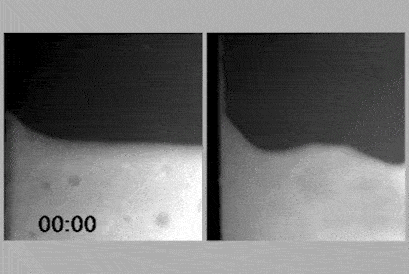Physical chemistry – Page 13
-
 Research
ResearchAI discovers the best general conditions yet for cross couplings, doubling yields
Algorithm works with robotic experimenter on tricky Suzuki–Miyaura reactions
-
 Research
ResearchMachine learning navigates vast materials space to discover new high-performance alloys
Neural net suggested unusual element combination to create better Invar alloys
-
 Research
ResearchAmide library created at speed with machine learning and stopped-flow chemistry
Approach used 90% less starting material than continuous flow equivalent
-
 News
NewsQuantum technology pioneers win physics Nobel
Alain Aspect, John Clauser and Anton Zeilinger are honoured for establishing quantum information science
-
 News
NewsAI picks out fake science
Textual analysis tool flags manuscripts that may have come from paper mills
-
 Research
ResearchBenzene’s bond lengths corrected
Sophisticated spectroscopic method shows that previously reported values were out by several milliangstroms
-
 Research
ResearchSurface reactions can be controlled by bulk stoichiometry
Computational models demonstrate how the elastic properties of a solid can influence surface chemistry
-
 Research
ResearchUntangling the spin-favouritism of chiral molecules
Theory shows why DNA can be picky over electron spin
-
 Article
ArticleA paradigm shift in the development of environmentally sustainable consumer packaged goods
Simulation technologies can shortcut the design process for new materials
-
 Article
ArticleDriving environmental sustainability across the polymer supply chain with a digital chemistry strategy
From synthesis to formulation, manufacturing, recycling and reprocessing, computational modelling supports every part of process
-
 Research
ResearchSuperheavy element flerovium is likely to be a liquid at room temperature
Element 114 predicted to be a volatile semiconductor with a melting point around 10°C
-
 Research
Research‘Periodic table’ of hydrocarbons maps ‘magic’ molecules with exceptional stability
Computational chemists calculate the stability of hydrocarbons and design a map with potential predictive power
-
 Research
ResearchActive liquid climbs walls
A two-phase liquid containing molecular motors could create a new class of soft matter
-
 Research
ResearchElectrons become chiral reagent in polymer synthesis
Chiral polymer made from completely achiral chemicals using only electrons’ angular momentum
-
 Research
ResearchComputational study says polonium can form hydrogen bonds
Bonds driven by relativistic effects, rather than electronegativity differences
-
 Opinion
OpinionWhy AlphaFold won’t revolutionise drug discovery
Protein structure prediction is a hard problem, but even harder ones remain
-

-
 News
NewsAlphaFold has predicted the structures of almost every known protein
Google offshoot DeepMind has released more than 200 million predicted 3D structures, covering nearly the entire protein universe
-
 Research
ResearchRich chemistry revealed by tip microscopy pulses’ bond making and breaking
Using an STM, scientists have been able to precisely switch between three different molecules, opening the way to multiple selective transformations
-
 Research
ResearchImprobable rotaxane made using a foldamer helix
Macrocycle displaced to a site for which it has no formal affinity